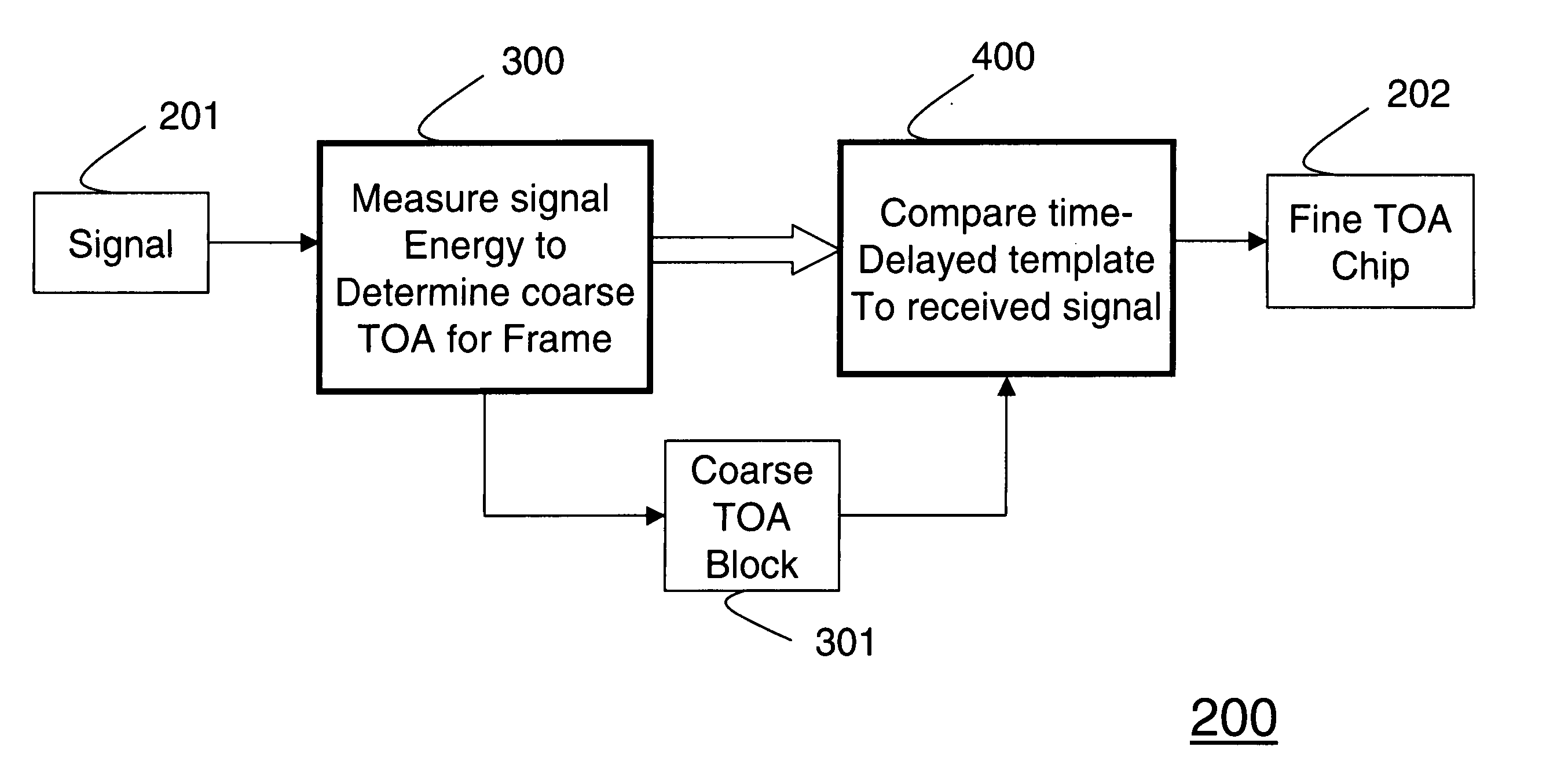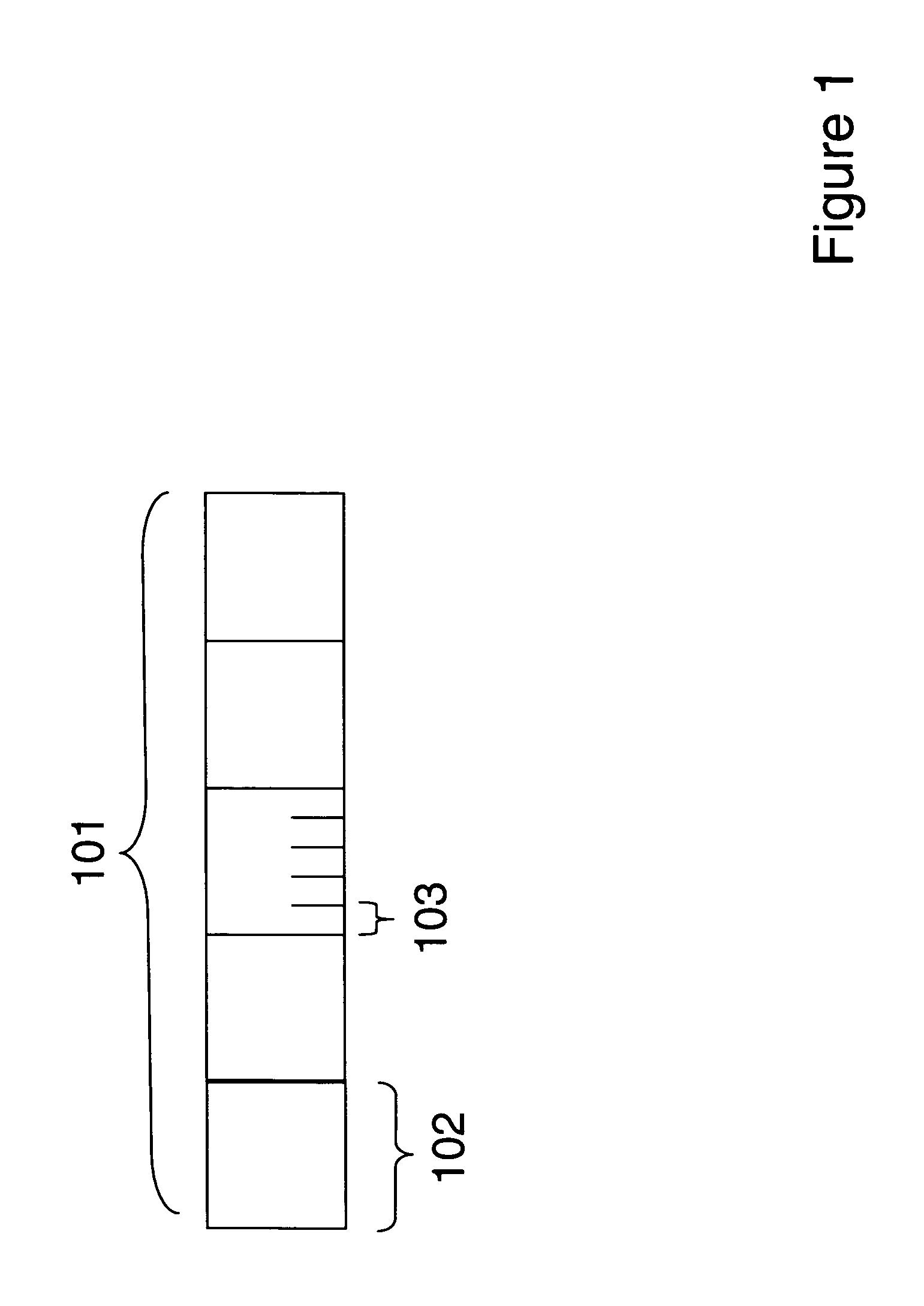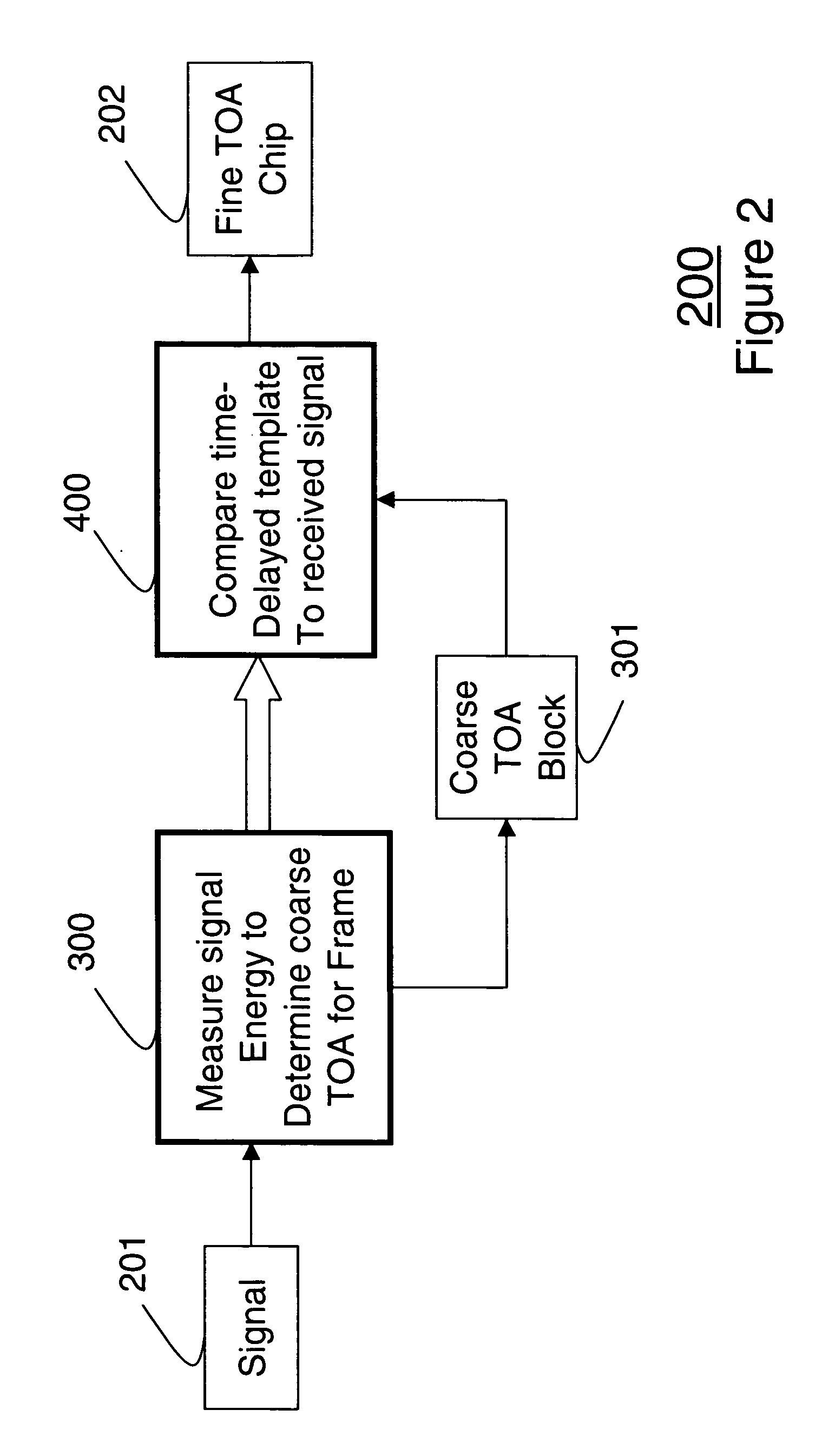Method for estimating time of arrival of received signals for ultra wide band impulse radio systems
a radio system and ultra wide band technology, applied in the field of radio communication systems, can solve the problems of inability to use prior art methods, and inability to accurately estimate the toa of the received signal
- Summary
- Abstract
- Description
- Claims
- Application Information
AI Technical Summary
Problems solved by technology
Method used
Image
Examples
Embodiment Construction
[0012] System Structure and Method Operation
[0013] Our invention provides a method for estimating a time of arrival (TOA) of a signal at a radio transceiver in a wireless communications network. For the purpose of this description, the transceiver estimates the TOA for a received signal. However, it should be understood that the transceiver can transmit and receive.
[0014] As shown in FIG. 1, wireless impulse radio transceivers mark time in terms of frames 101, blocks 102, and chips 103. Frames are longer than blocks, which are longer than chips. Each frame includes multiple blocks. Each block includes multiple chips.
[0015] A binary phase shift keying (BPSK) time hopping (TH) impulse radio (IR) transmitted signal can be represented by: stx(t)=E∑j=-∞∞ ajb⌊j / Nf⌋wtx(t-jTf-cjTc),(1)
[0016] where wtx(t) is a transmitted ultra wideband (UWB) pulse having a duration Tc, E is a transmitted pulse energy, Tf is a frame time, Nf is a number of pulses representing one information symb...
PUM
 Login to View More
Login to View More Abstract
Description
Claims
Application Information
 Login to View More
Login to View More - R&D
- Intellectual Property
- Life Sciences
- Materials
- Tech Scout
- Unparalleled Data Quality
- Higher Quality Content
- 60% Fewer Hallucinations
Browse by: Latest US Patents, China's latest patents, Technical Efficacy Thesaurus, Application Domain, Technology Topic, Popular Technical Reports.
© 2025 PatSnap. All rights reserved.Legal|Privacy policy|Modern Slavery Act Transparency Statement|Sitemap|About US| Contact US: help@patsnap.com



